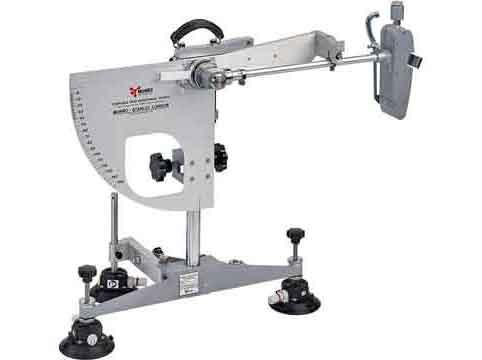Slip Resistance Testing for Workplaces
Slip Resistance Testing for Workplaces
Slip Resistance Testing for Workplaces is the measure of a surface's ability to provide adequate traction and prevent slipping accidents. It is usually expressed as a value between 0 and 1, with higher values indicating better slip resistance.
Why Is Slip Resistance Important in Workplaces?
Workplaces vary in terms of surfaces, from office floors to manufacturing facilities. Slip resistance is vital because it helps reduce the risk of slip and fall accidents, which can lead to injuries, worker's compensation claims, and legal issues.
Benefits of Slip Resistance Testing
Slip resistance testing offers several advantages to businesses:
- Reduced Accidents: Testing identifies high-risk areas, allowing for preventive measures to be taken.
- Compliance: Ensures compliance with safety regulations and standards.
- Productivity: Employees are more confident and efficient when they feel safe at work.
Methods of Slip Resistance Testing
Various methods are used to assess slip resistance:
The Pendulum Test
This method simulates a person's heel striking a floor and measures the friction generated.
This test involves a swinging pendulum, which replicates a heel strike, providing valuable COF data.
Regulatory Compliance
Workplaces must adhere to safety guidelines and standards:
- OSHA Guidelines: The Occupational Safety and Health Administration provides guidelines for slip resistance.
- ANSI Standards: The American National Standards Institute outlines standards for slip resistance testing.
Implementing Slip Resistance Testing
Hiring Professional Services
Many businesses opt to hire professional slip resistance testing services, ensuring accurate and unbiased results.
In-House Testing
Some companies choose to conduct slip testing in-house, which can be cost-effective with proper training and equipment.
Maintenance and Remediation
Regular Maintenance
Routine maintenance ensures that slip resistance remains effective over time.
Corrective Measures
If testing reveals issues, immediate corrective actions must be taken to address them.
Educating Employees
Training Programs
Educating employees on slip resistance and safety protocols is essential to prevent accidents.
Safety Awareness
Creating a culture of safety awareness among employees fosters a safer workplace environment.
Case Studies
Explore real-life examples of businesses that have successfully implemented slip resistance testing and the lessons learned from their experiences.
The Economic Aspect
Investing in slip resistance testing ultimately saves businesses money by preventing accidents and legal liabilities.
Pendulum Slip Testing for workplaces
Pendulum slip testing is a crucial safety measure for workplaces to assess and mitigate the risk of slip and fall accidents. It helps organizations identify potential slip hazards and take appropriate measures to prevent accidents. Here's an overview of pendulum slip testing for workplaces in English:
What is Pendulum Slip Testing?
Pendulum slip testing is a method used to measure the slip resistance of flooring surfaces in workplaces. It simulates the slipperiness of a floor under various conditions, such as wet or contaminated surfaces, to determine if they meet safety standards and minimize the risk of slips and falls.
Why is Pendulum Slip Testing Important in Workplaces?
- Safety: Slip and fall accidents are a leading cause of workplace injuries. Pendulum slip testing helps identify slippery surfaces and allows organizations to take preventive measures to protect employees and visitors.
- Compliance: Many regulatory agencies and safety standards require workplaces to maintain safe flooring conditions. Pendulum slip testing ensures compliance with these standards and regulations.
- Cost Savings: Preventing slip and fall accidents can lead to significant cost savings for businesses by reducing workers' compensation claims and liability issues.
How Does Pendulum Slip Testing Work?
The pendulum slip tester consists of a swinging pendulum arm with a rubberized slider at its lower end. The slider impacts the floor surface under controlled conditions. The tester measures the distance the slider travels after impact, indicating the slipperiness of the surface. This measurement is often expressed as the Pendulum Test Value (PTV) or the British Pendulum Number (PN).
Steps in Pendulum Slip Testing:
- Preparation: Ensure the floor surface is clean and dry for the initial test.
- Testing: The pendulum is released and strikes the floor surface. The distance the slider travels is recorded.
- Wet Testing: If needed, the floor can be wetted with water or a specified contaminant, and the test is repeated to assess slip resistance under wet conditions.
- Analysis: The PTV or PN is calculated based on the test results. Higher values indicate better slip resistance.
- Interpretation: Compare the PTV or PN to safety standards or guidelines to determine if the floor surface meets the required slip resistance criteria.
Improving Slip Resistance:
If the slip resistance is below the desired level, workplaces can take various measures to improve it, such as applying anti-slip coatings, installing slip-resistant mats, or replacing the flooring material.

Share
Recent posts
-
What is BS 7976 Pendulum?
Posted 25th June, 2024 -
What are the Laws in the UK Regarding the Danger of Slipping in Public Places
Posted 25th June, 2024 -
What is the pendulum slip rating test?
Posted 25th June, 2024 -
What Are Floor Wear Resistance Ratings?
Posted 30th May, 2024 -
Tile/floor manufacturers? This service is for you
Posted 30th May, 2024 -
Floor Wear Assessment-Types of Flooring
Posted 30th May, 2024
